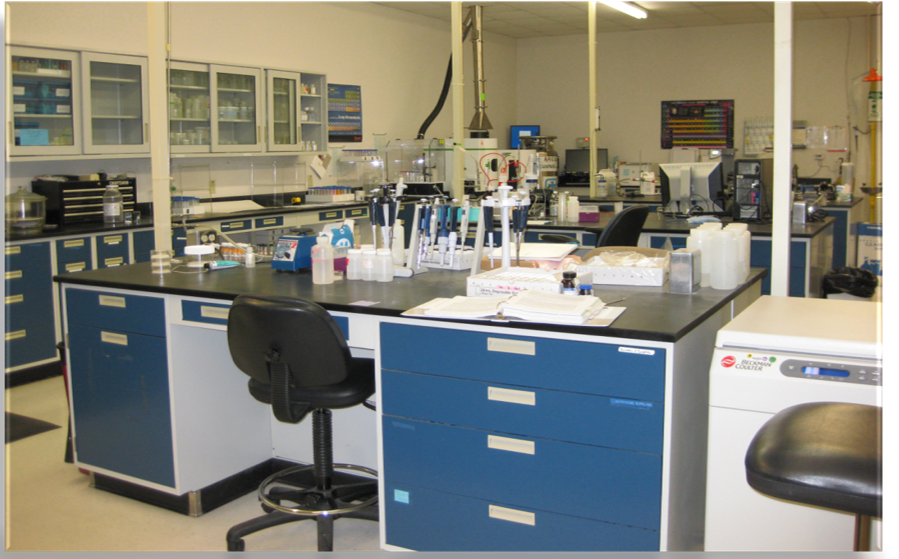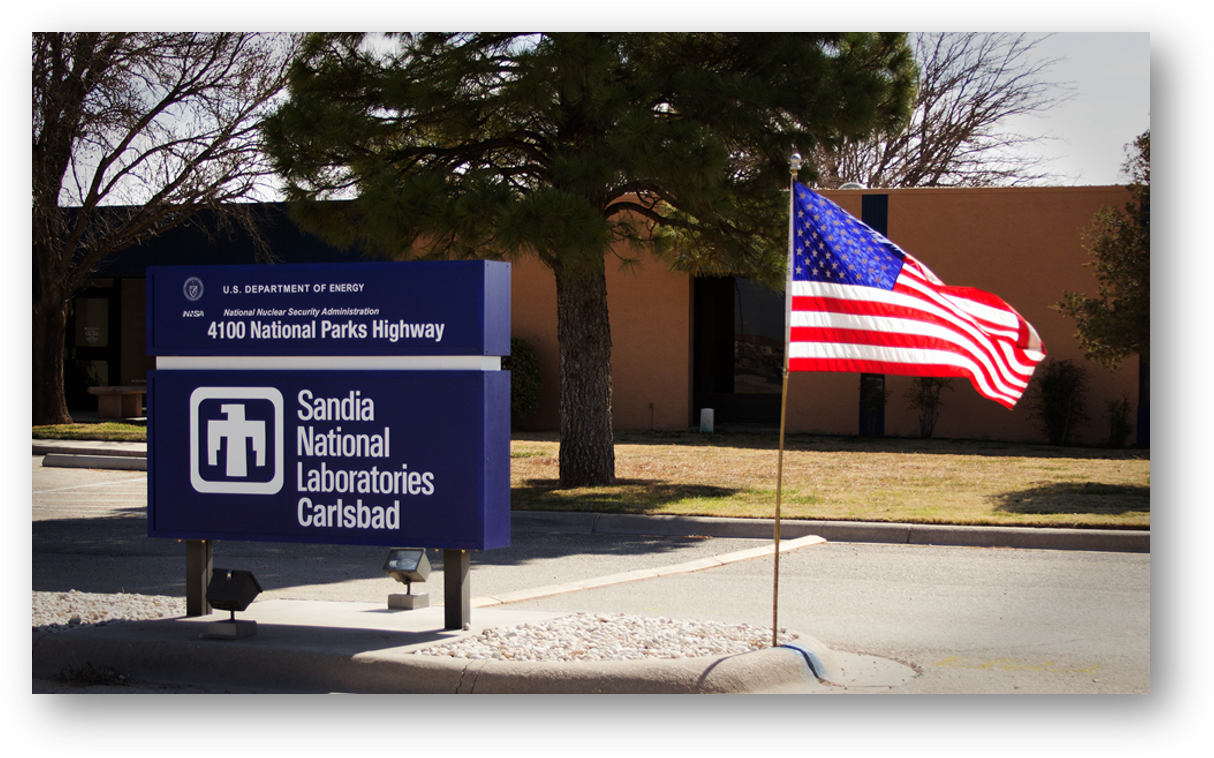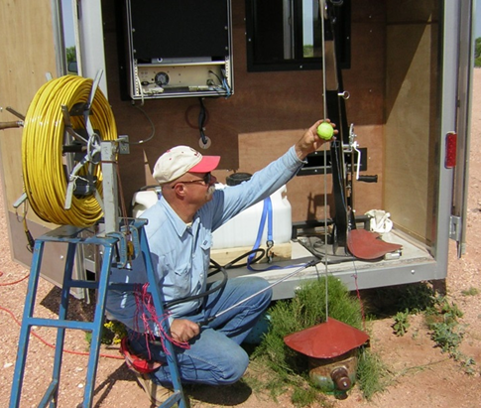
The Waste Isolation Pilot Plant (WIPP) is the nation’s only licensed and operating deep geologic repository for transuranic nuclear waste disposal. Sandia supports activities including modifications to the repository’s operating permits, periodic recertifications of the repository, and on-going monitoring of the repository performance against regulatory requirements. Building on a fifty year history with WIPP, Sandia is now engaged in shaping technical solutions to national nuclear waste management challenges that go well beyond disposal of transuranic waste.
Defining Transuranic Waste
The term transuranic waste means waste containing more than 100 nanocuries of alpha-emitting transuranic isotopes per gram of waste, with half-lives greater than twenty years; with the exception of high-level radioactive waste.
WIPP transuranic waste is derived from defense-related activities and includes such items as laboratory and industrial waste contaminated with transuranic radionuclides, alpha-emitting radionuclides with relatively little gamma emission, and fewer fission products than spent nuclear fuel or high-level radioactive waste.
Isolation in Salt
Transuranic waste is disposed of in salt as a result of key benefits, including:
- Intact salt is essentially impermeable and does not contain flowing groundwater. Additionally, the water that is present in salt formations is salt-saturated brine, and incapable of further dissolution.
- Salt creep will close fractures, consolidate crushed salt backfill, allow shaft seals to function like intact rock, and close disposal panels. Eventually all transuranic waste will be encapsulated in intact salt.
- There is no reliance on waste packages for long-term isolation and waste is assumed to be exposed to the host rock environment as soon as the repository is closed.

Sandia’s Current Work at WIPP
Sandia’s support for the Department of Energy (DOE) on matters pertaining to WIPP has evolved over time. It began with site characterization in the mid-1970s. It then moved to extensive testing in the WIPP underground as excavations ensued in the 1980s. In the 1990s, Sandia began to focus heavily on modeling and simulation in order to estimate the cumulative releases of radioactive material to the accessible environment that might occur over the 10,000-year period following WIPP’s closure– the regulatory period of interest to the EPA, WIPP’s federal regulator. From the late 1990s on, Sandia has continued to offer scientific advice to DOE on matters pertaining to WIPP’s long-term performance, the centerpiece of which continues to be ever more sophisticated modeling and simulation work, informed by fundamental, but WIPP-relevant studies in geochemistry, geomechanics, and geohydrology.
DOE must submit to the EPA a compliance recertification application every five years following the first receipt of waste at WIPP (March 26, 1999). So far, four such recertification applications have been submitted. Sandia was heavily involved in the crafting of those applications given that we are responsible for much of the technical and scientific work described in them. Between these recertification application submittals, Sandia’s support is also invoked for regulatory submittals (called Planned Change Requests or Planned Change Notices), where analysis and computer simulations of repository performance in light of DOE’s proposed change inform EPA regulatory judgments about the changes in question. The newest of these considerations has to do with DOE’s proposal to add waste disposal panels to the west of the existing underground excavations. This would more than double the physical footprint of the waste disposal areas in the repository and it will require significant departures from the way in which Sandia has historically modeled the repository in its performance assessment calculations. These new approaches are under development.
In parallel with these performance assessment-related activities, Sandia is conducting research in geochemistry and geomechanics that may result in enhancements to implementation of our modifications to one or more of the twenty-four conceptual models for WIPP. There may also be a need to recalculate transmissivity fields that are used to model the movement of groundwater through a dolomite layer just above the salt formation in which the repository is mined.
Finally, Sandia provides support for DOE’s National TRU Program Office, the arm of DOE’s Carlsbad Field Office that works with waste generator sites across the nation to optimize long-term waste shipment schedules, keep WIPP’s waste acceptance criteria up to date, and coordinate interfaces between WIPP operations and the TRU waste complex. In this capacity, we provide system studies and analyses at the direction of the DOE customer.



Contact
Gregory Roselle
gtrosel@sandia.gov